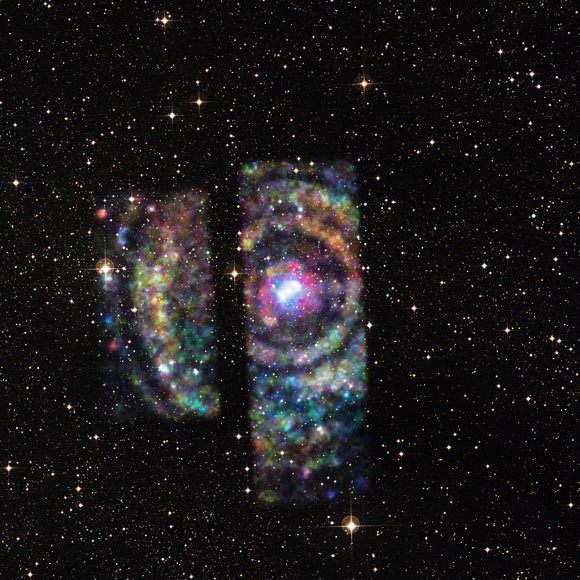NASA has claimed that it has found a strange source of X-rays in Milky Way galaxy that provides a new "measuring stick" to astronomers in determining the distance to the unique object.
According to the recent NASA report published in The Astrophysical Journal, a neutron star located in the galaxy’s oddest supernovae released burst of X-rays in 2013, resulting to a surprising new measuring stick for astronomers. Called Circinus X-1, it glows husk of a binary star system that exploded a mere 2,500 years ago.
It comprises of a nebula and a neutron star that is still in the orbital embrace of its companion star. It is also called X-ray binary because it produces X-rays when materials from the companion star twists onto denser neutron star and heated to very high temperature. Its neutron star is in orbit with an evolved companion star, and is covered by thick clouds of interstellar gas and dust.
University of Wisconsin-Madison astronomy Professor Sebastian Heinz and his colleagues have used -Newton telescopes to discover four bright rings of X-rays and made a series of follow-up observations. Observations include ripples in a cosmic pond around the neutron star at the heart of Circinus X-1.
These rings are light echoes from Circinus X-1's X-ray burst. Each of them specifies a dense cloud of dust between Earth and the supernova remnant. They can be deflected when X-rays encounter grains of dust in interstellar space, and if the dust clouds are denser, they can distribute a visible fraction of the X-rays away from their original trajectory, putting them on a triangular path.
The team believed that this activity may offer a chance to utilize the geometry of the rings. It also gives an opportunity to time delay deflected and undeflected X-rays, calculating the distance to Circinus X-1, a measurement previously unattainable due to the supernova hidden in the dust that filter the plane of the galaxy, according to Nanowork.
Using the data, they concluded that Circinus X-1 is 30,700 light-years from Earth.



























